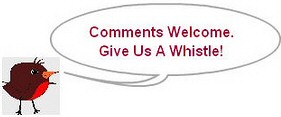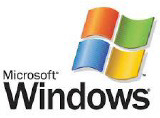The annual inflation rate is at a four-year low
-
Inflation edges up slightly in April: The Consumer Price Index rose 0.2% after a decline in March, with shelter and energy prices driving the increase.
-
Overall food prices declined 0.1%, with grocery costs falling but restaurant prices continuing to rise.
-
The CPI rose 2.3% year-over-year, the smallest annual gain since February 2021.
Inflation showed modest movement in April as consumer prices increased slightly following a rare monthly dip, according to the latest data from the U.S. Bureau of Labor Statistics. The Consumer Price Index for All Urban Consumers rose 0.2% in April on a seasonally adjusted basis, reversing a 0.1% decline in March.
Economists expected to see a higher rate of inflation in April because of tariffs. But over the past 12 months, inflation rose 2.3%, marking the slowest annual increase in more than four years.
Housing costs continued to be a major source of inflation, with the shelter index climbing 0.3% in April. This single component accounted for more than half of the months overall CPI increase. Rising costs in electricity and natural gasup 0.8% and 3.7%, respectivelyalso contributed, although gasoline prices dipped 0.1% on a seasonally adjusted basis.
While energy prices rose 0.7% in April, the energy index remains down 3.7% compared to the same time last year. Gasoline prices have fallen 11.8% year-over-year, while natural gas has spiked 15.7%.
What does it mean for interest rates?
We are one step closer to a rate cut by the Federal Reserve as consumer price inflation continues to calm down. The latest inflation rate of 2.3% is the slowest rise in about four years, but still above the target inflation rate of 2%," said Lawrence Yun, chief economist at the National Association of Realtors, in an email to ConsumerAffairs.
"Prescription medicine prices rose by 2.3% even as non-prescription drug costs fell by 1%. These costs could dramatically change in the upcoming months, though they comprise just 1.3% of the overall consumer budget and inflation calculation. Medical service costs like visits to the doctor and hospitals take up a larger proportion, and these costs rose by 3.1%," Yun said.
But, as always, housing costs are the elephant in the room. "Comprising one-third of the budget, that cost rose by a hefty 4%," Yun said. "Getting shelter costs under control with more housing supply (and not via disastrous rent control) will be the key to getting overall inflation fully tamed and for the Federal Reserve to 'normalize,'which in my view means 4 to 6 additional rate cuts.
"Fed rate cuts with high inflation will not result in lower mortgage rates. However, rate cuts because of falling inflation will mean meaningfully lower mortgage rates, Yun added.
Grocery prices fall while restaurant prices rise
Food prices presented a mixed picture in the latest calculations. Overall, the food index declined 0.1% in April, its first drop in months. Grocery store prices fell 0.4%, led by a steep 12.7% decline in egg prices and a broader 1.6% drop in the meats, poultry, fish, and eggs category.
At the same time, prices for food consumed away from home increased 0.4%, with full-service meal costs rising 0.6%. Over the past year, dining out has become 3.9% more expensive, while grocery prices have climbed a more modest 2.0%.
Excluding volatile food and energy prices, the core CPI rose 0.2% in April, following a 0.1% rise in March. Among the categories showing increases were household furnishings, medical care (up 0.5%), and car insurance (up 0.6%). However, airfares declined by 2.8%, and used car prices dropped 0.5%.
Over the past 12 months, core inflation increased 2.8%. Medical care, education, and motor vehicle insurance all posted annual gains above the headline rate, with motor vehicle insurance jumping 6.4% year-over-year.
Sign up below for The Daily Consumer, our newsletter on the latest consumer news, including recalls, scams, lawsuits and more.
Posted: 2025-05-13 15:06:46


















